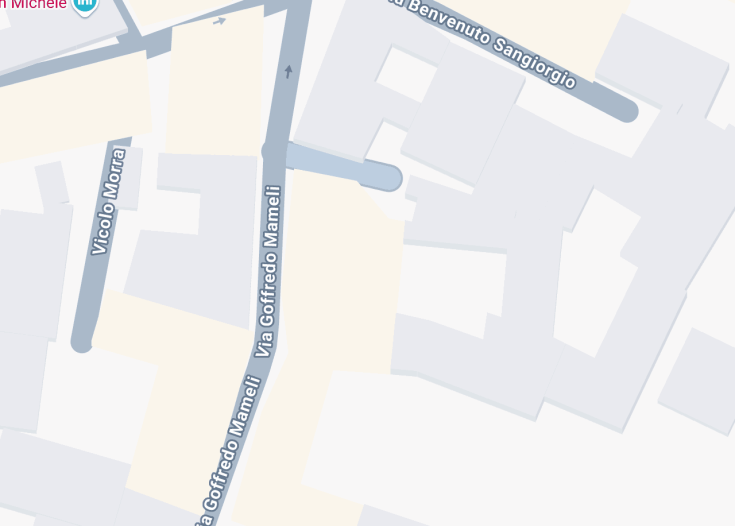Nestled in the charming town of Casale Monferrato, the Palazzo Gozzani di Treville stands as a magnificent example of Baroque architecture. This historic palace dates back to the 18th century and serves not only as a testament to the artistic and cultural prowess of the period but also as a popular attraction for visitors seeking to immerse themselves in Italy’s rich heritage.
Its exquisite frescoes, intricate stucco work, and beautifully maintained gardens provide a stunning glimpse into the opulent lifestyle of its former aristocratic residents.
To fully appreciate the intricate details of Palazzo Gozzani di Treville’s frescoes, consider bringing a pair of binoculars or a camera with a good zoom function.
Plan your visit during the early mornings or late afternoons to enjoy the Palazzo with fewer crowds and a more relaxed atmosphere, enhancing your experience of its artistic details.
Palazzo Gozzani di Treville: A Historic Jewel
The Palazzo Gozzani di Treville, located in the picturesque town of Casale Monferrato in Italy, stands as a remarkable example of baroque architecture. This historic palace offers a unique glimpse into Italy’s opulent past, making it a must-visit destination for history enthusiasts and tourists alike.
Originally built in the early 1700s, the palace showcases exquisite artworks and elaborate decorations that reflect the grandeur of that era. Its interior boasts impressive frescoes, intricate stucco work, and meticulously crafted wood panels, captivating visitors with their artistic and historic significance.
The ambiance of the palace is further enriched by its beautifully maintained gardens, offering a serene retreat from the bustling city life. The combination of its architectural beauty, historic relevance, and the calming nature of its gardens make Palazzo Gozzani di Treville a standout tourist attraction.
Explore the Elegance of Palazzo Gozzani di Treville
Visitors to Palazzo Gozzani di Treville are treated to a remarkable journey through time. Upon entering, you are immediately struck by the grand staircase which sets the tone for the rest of the visit. Each room is a treasure trove of art, with ceilings adorned with vibrant frescoes that depict scenes from mythology and history.
One of the highlights is the Throne Room, which exudes a royal air with its ornate decorations and historical paintings. The gardens are equally impressive, providing a peaceful escape with well-manicured lawns and an array of flora that accentuates the palace’s aesthetic.
Events such as guided tours and historical reenactments further enrich the visitor experience, allowing guests to immerse themselves fully in the splendor of the Baroque Era.
Marvel at the Throne Room’s Historical Frescoes
Among the many stunning features of Palazzo Gozzani di Treville, the Throne Room stands out significantly. This room is particularly noted for its intricate frescoes that cover the ceiling. These artworks are not only visually striking but also hold great historical value, depicting various significant historical and mythological events that resonate with Italy’s rich history.
The detail and craftsmanship evident in each fresco make the Throne Room an essential stop for anyone visiting the palace. The artistic depictions serve as a vivid narrative of past events, providing insight into the cultural and societal norms of the time.
Discover the charm of Palazzo Gozzani di Treville
The Palazzo Gozzani di Treville offers a captivating journey back in time, making it an ideal destination for history enthusiasts and architectural aficionados. Families, couples, and older visitors alike will find the beautifully preserved architecture and intricate details mesmerizing. Expect to walk through history as you explore the rich interiors and expansive gardens.
Best times to explore Palazzo Gozzani di Treville
Visiting the Palazzo Gozzani di Treville is most enjoyable during the spring and autumn months, when the weather is mild and the gardens are in full bloom or richly colored with autumn leaves. These seasons provide a perfect backdrop for photographs and leisurely walks.
Annual events not to be missed
Every September, the palazzo hosts the “Heritage Days,” where special tours and cultural events offer a deeper insight into its historical significance. This event is an ideal time for a visit, allowing for a more enriched experience.
Accessibility and visitor limitations at Palazzo Gozzani di Treville
Accessibility
Limitations
- Large bags and backpacks are not allowed inside the exhibit halls.
- Photography is restricted in certain areas.
Notes to visitors
- Advance booking is recommended, especially during peak seasons and events.
- Outdoor food and beverages are not permitted.
General information
Important details for your visit to Palazzo Gozzani di Treville
Location insights
The palazzo is conveniently located near major public transportation and is easily accessible from the city center, making it a practical destination for visitors. Nearby landmarks include the historical cathedral and main square, enhancing its cultural value.
Address:
123 Historical Way, Casale Monferrato, Italy
Opening hours
The Palazzo Gozzani di Treville is open to the public from 10:00 AM to 5:00 PM, Tuesday through Sunday. It remains closed on Mondays and major public holidays.
Travel options to Palazzo Gozzani di Treville
Car
Visitors can reach the palazzo by car, with available parking options nearby. Here’s how to get there from major nearby locations:
| Route | Distance | Travel time |
|---|---|---|
| From Milan | 90 km | 1 hour 10 minutes |
| From Turin | 85 km | 1 hour 20 minutes |
| From Genoa | 120 km | 1 hour 45 minutes |
Train
The train provides a scenic and convenient alternative, with the local station just a 10-minute walk from the palazzo.
| Route | Distance | Travel time |
|---|---|---|
| From Milan | — | 1 hour |
| From Turin | — | 1 hour 15 minutes |
| From Genoa | — | 2 hours |
Nearby Attractions
While visiting, consider exploring these nearby attractions:
- Main City Cathedral – 500 meters (0.3 miles)
- Local Art Museum – 600 meters (0.37 miles)
- Historic City Theater – 1 km (0.62 miles)
- Riverside Park – 800 meters (0.5 miles)
- Contemporary Art Gallery – 450 meters (0.28 miles)
- Botanical Gardens – 1.2 km (0.75 miles)
- Archaeological Museum – 700 meters (0.43 miles)
- City Hall – 900 meters (0.56 miles)
- Antique Market Square – 1.1 km (0.68 miles)
- Library of Ancient Manuscripts – 500 meters (0.3 miles)
- The Royal Palace Museum – 1.3 km (0.8 miles)
- Iconic Bridge Viewpoint – 1 km (0.62 miles)
Common questions
What architectural style characterizes Palazzo Gozzani di Treville?
What historical events took place at Palazzo Gozzani di Treville?
What notable artwork is housed in Palazzo Gozzani di Treville?
Are there guided tours available at Palazzo Gozzani di Treville, and what do they include?
Can visitors participate in any interactive activities at Palazzo Gozzani di Treville?
What is the best time of year to visit Palazzo Gozzani di Treville for optimal experience?
How has Palazzo Gozzani di Treville been preserved and maintained over the years?
Is Palazzo Gozzani di Treville involved in any cultural or arts festivals?
What are some nearby attractions to Palazzo Gozzani di Treville?
Are there any conservation efforts at Palazzo Gozzani di Treville to protect its historical integrity?
What educational programs are available at Palazzo Gozzani di Treville?
Does Palazzo Gozzani di Treville accommodate special events or private functions?

Is the Palazzo Gozzani di Treville in Casale Monferrato worth visiting?
For those who appreciate art and history, the Palazzo Gozzani di Treville stands as a noteworthy destination. Situated in the heart of Casale Monferrato, this historical building captivates visitors with its intricate baroque architecture, offering a glimpse into the opulence of past centuries.
The palazzo is renowned for its beautifully decorated rooms and an impressive facade that transports visitors back in time. However, it’s important to note that the accessibility of the interiors can be limited, often depending on private events or specific public opening days.
This aspect might restrict opportunities for spontaneous visits. Despite this, its architectural grandeur and the chance to delve deep into the region’s cultural heritage make it a valuable stop for those exploring the area.










